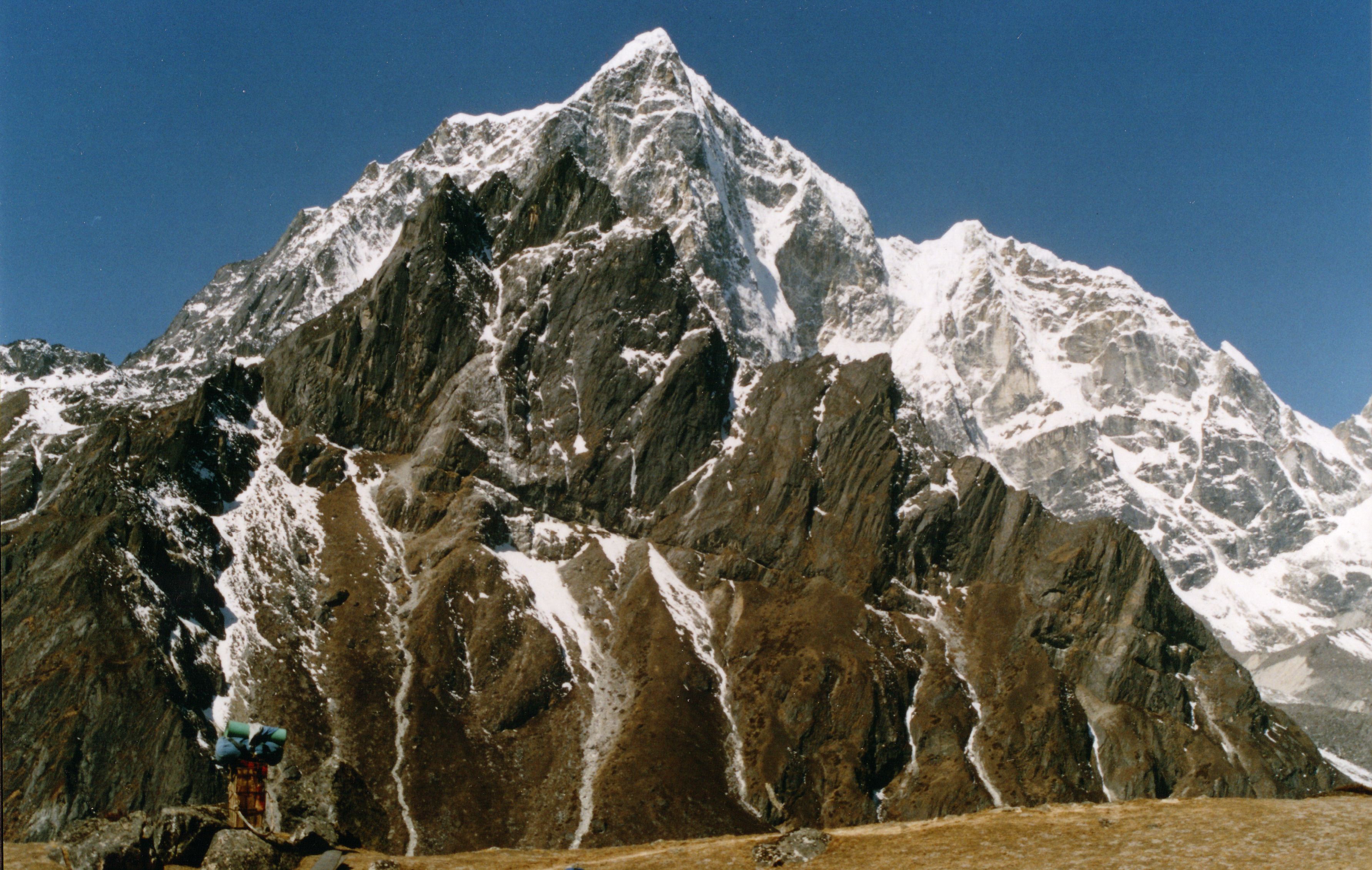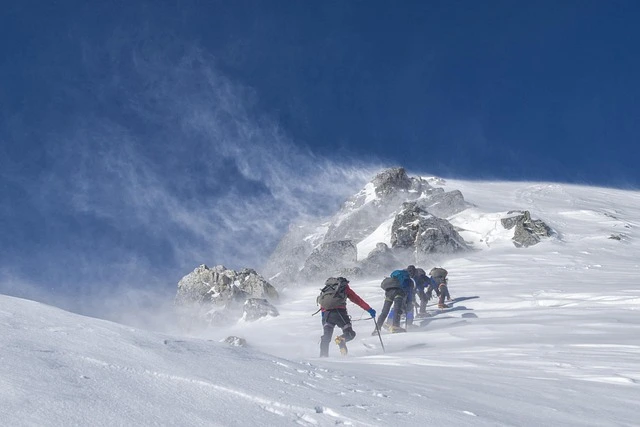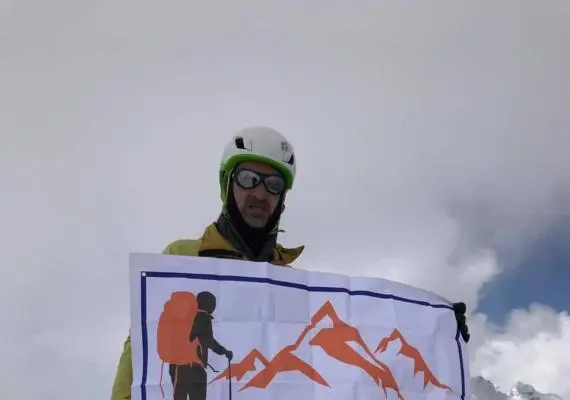Ready for a real wilderness trek that takes you completely off the beaten path? The Walangchung Gola Trek (also known as the Olangchung Gola Trek) is Eastern Nepal's best-kept secret—a 28-day journey through one of the most isolated and spectacular regions of the Himalayas.
Picture this: you're walking along ancient trade routes where yak caravans once carried salt from Tibet, passing through villages so remote that many locals have never seen the capital city. This is Walungchung Gola Nepal at its finest—raw, authentic, and absolutely breathtaking.
Located in the far northeastern corner of Nepal, this Kanchanjunga region trek combines everything serious trekkers dream about. You'll cross high mountain passes, meet fascinating indigenous communities, spot rare wildlife, and experience a level of remoteness that's increasingly hard to find in our connected world.
What makes this trek special? It's one of the last remote Nepal treks where you can walk for days without seeing another trekking group. This Eastern Nepal adventure takes you through the restricted border area near Tibet, offering a wilderness adventure that feels like stepping back in time.
Trip Highlights
- Two spectacular high passes: Nang La Pass (5,110m) and Ghan La Pass (5,075m)
- Ancient Tibetan salt trade route still used by local traders
- Walung people's unique culture preserved in isolation
- Deki Chholing Gompa - centuries-old monastery with stunning murals
- Wildlife sanctuary home to snow leopards, blue sheep, and red pandas
- 360-degree mountain views including Kanchanjunga, Makalu, and peaks in Tibet
- Complete wilderness immersion - days without phone signal or modern conveniences
- Authentic village homestays with families who rarely see outsiders
- Dramatic landscape diversity from subtropical forests to glacial valleys
Walangchung Gola Trek Itinerary in Brief
Your 28-day adventure follows this general route:
- Days 1-3: Kathmandu to Taplejung (travel and preparation)
- Days 4-8: Trek from Taplejung through villages to Ghunsa
- Days 9-13: Ghunsa to Yangma village via remote valleys
- Days 14-17: Yangma to Walangchung Gola (Olangchung Gola)
- Days 18-20: Cross Nang La Pass to upper valleys
- Days 21-23: Navigate Ghan La Pass circuit
- Days 24-27: Descend through different valleys to Taplejung
- Day 28: Return to Kathmandu (departure day)
The beauty of this extended itinerary? You'll have proper acclimatization days, time to explore side valleys, and flexibility for weather delays at high passes.
Planning Your Olangchung Gola Trek
Getting to the Trek Starting Point
Your journey to this remote corner of Nepal is an adventure in itself. Here's how you'll get there:
- Fly from Kathmandu to Bhadrapur (45 minutes) - enjoy views of the entire Himalayan range
- Drive to Taplejung (8-10 hours) - winding mountain roads through tea gardens
- Alternative: Fly directly to Suketar Airport near Taplejung (weather dependent)
The drive from Bhadrapur gives you a fascinating glimpse of Nepal's diversity. You'll pass through:
- Tropical lowlands with banana plantations
- Rolling hills covered in tea gardens
- Traditional Limbu villages
- Your first mountain views appearing as you climb
Pro tip: Break the journey with an overnight stop in Ilam if you want to explore Nepal's tea country!
Permits and Documentation Required
This restricted area trek requires several permits:
- Special Restricted Area Permit - $10 per day (minimum 2 people)
- Kanchenjunga Conservation Entry Permit - NPR 2,000
- TIMS Card (Trekkers' Information Management System) - $10
- Passport with 6+ months validity
- Travel insurance covering high-altitude rescue (mandatory)
Important: You cannot obtain these permits independently. You must book through a registered trekking agency with at least one other person (or pay for two permits if trekking solo).
Walangchung Gola Trek Cost Breakdown
Let's talk real numbers so you can budget properly for this adventure.
Permit Fees and Government Requirements
Your permit fees add up to approximately:
- Special Restricted Area Permit: $280 (28 days × $10)
- Kanchenjunga Conservation Entry Permit: $20
- TIMS Card: $10
- Total permits: Around $310 per person
These fees directly support conservation efforts and local communities—money well spent!
Guide, Porter, and Support Staff Costs
For this remote trek, professional support isn't just recommended—it's essential:
- Experienced guide: $30-35 per day
- Assistant guide (for groups over 4): $25 per day
- Porter costs: $20-25 per day (carries 20-25kg)
- Cook (for camping sections): $25-30 per day
Total guide and porter cost for 28 days: approximately $1,400-1,800 depending on group size.
Accommodation and Meal Expenses
The accommodation cost varies along the route:
- Lower villages (basic lodges): $5-8 per night
- Remote settlements (homestays): $10-15 including meals
- Camping sections: Included in organized trek price
- Daily meal budget: $20-30 (increasing with altitude)
Expect to spend around $700-900 on accommodation and food for the entire trek.
Total trek cost estimate: $3,500-4,500 per person (all-inclusive with agency)
Best Time for Walangchung Gola Trek
Timing is everything on this high-altitude adventure. Let me break down your options.
Spring Season (March-May)
Spring (Mar-May) is arguably the best time for Walangchung Gola Trek:
- Rhododendron forests explode in pink, red, and white blooms
- Clear skies offer stunning mountain photography
- Weather conditions are stable with minimal precipitation
- Wildlife is active after winter hibernation
- Snow levels on passes are manageable
- Temperature range: 5-20°C in valleys, -5 to 5°C at high passes
April particularly shines with perfect conditions, though March works if you're prepared for colder nights.
Autumn Season (September-November)
Autumn (Sep-Nov) brings different rewards:
- Crystal-clear mountain views after monsoon washing
- Stable weather with predictable conditions
- Harvest season in villages (amazing cultural experiences)
- Comfortable temperatures for trekking
- Festival season - possibly catch Dashain or Tihar celebrations
October offers the most reliable weather, though early November can be magical with crisp air and perfect visibility.
Off-Season Considerations
While possible, off-season trekking presents challenges:
Winter (December-February):
- Heavy snow may block high passes
- Extreme cold (-20°C possible above 4,000m)
- Many lodges close in highest villages
- Ultimate solitude and stark beauty
Monsoon (June-August):
- Daily rain in lower elevations
- Leeches and slippery trails
- Limited mountain views
- Lush green landscapes
- Not recommended due to landslide risks
Trek Difficulty and Physical Preparation
Understanding the Challenge Level
Let's be straight with you—the trek difficulty is high. This isn't your average Nepal trek. Here's why:
- Duration: 28 days requires serious stamina
- Altitude: Two passes above 5,000m
- Remoteness: Days from medical help
- Trail conditions: Often rough, unmarked sections
- River crossings: Some without bridges
- Weather exposure: Rapid changes are possible
This challenging trek suits experienced trekkers who've done multi-week hikes before.
Physical Fitness Requirements
Your physical fitness preparation should begin 3-4 months ahead:
Cardiovascular training:
- Run or bike 4-5 times weekly
- Include hill training or stair climbing
- Build up to 2-hour continuous cardio sessions
- Practice with weighted backpack (10-12kg)
Strength training:
- Focus on legs, core, and back
- Squats, lunges, and step-ups
- Planks and stability exercises
- Upper body for pole use and scrambling
Mental preparation:
- Practice meditation or mindfulness
- Prepare for basic living conditions
- Build patience for weather delays
- Develop positive attitude for challenges
Altitude Considerations and Acclimatization
Altitude sickness is a real concern above 3,000m. Your itinerary includes built-in acclimatization days, but you need to:
- Ascend gradually - never rush
- Stay hydrated - 4-5 liters daily
- Eat well even if appetite decreases
- Sleep low after climbing high
- Recognize symptoms - headache, nausea, fatigue
- Communicate with your guide about how you feel
Prevention tips:
- Consider Diamox (consult your doctor)
- Avoid alcohol above 3,000m
- Take rest days seriously
- Don't be heroic—descend if symptoms worsen
Essential Packing List for Walangchung Gola
Clothing and Layering System
Your packing list needs to handle everything from tropical heat to arctic conditions:
Base layers:
- 2-3 moisture-wicking shirts (merino wool ideal)
- 2 thermal underwear sets
- 3-4 pairs quality trekking socks
- Underwear for 7 days (quick-dry)
Insulation layers:
- Fleece or soft-shell jacket
- Down jacket (650+ fill power)
- Fleece pants for high camps
- Insulated vest (versatile option)
Outer layers:
- Waterproof/breathable jacket (Gore-Tex level)
- Waterproof pants
- Windbreaker (lightweight backup)
Accessories:
- Warm hat and sun hat
- Buff or neck gaiter (multipurpose)
- Liner gloves + insulated gloves
- Gaiters for snow sections
Gear and Equipment Essentials
Must-have gear:
- Sleeping bag rated -15°C minimum
- Trekking boots (waterproof, broken in)
- Trekking poles (essential for passes)
- Headlamp + spare (with extra batteries)
- Sunglasses (UV protection crucial)
- Water bottles or hydration system (3L capacity)
- Daypack (25-35L)
- Duffel bag for porters (provided by many agencies)
Personal care:
- Sunscreen SPF 50+ (high altitude sun is intense)
- Lip balm with SPF
- Personal first aid kit
- Toiletries (biodegradable preferred)
- Wet wipes (shower substitute)
- Hand sanitizer
Electronics:
- Camera + extra batteries (cold drains power)
- Power bank (20,000mAh+)
- Charging cables
- Plastic bags for waterproofing
Cultural Highlights Along the Trail
Meeting the Walung People
The Walung people culture is one of this trek's greatest treasures. These indigenous people of Tibetan origin have maintained their traditions in splendid isolation:
- Language: Walung dialect mixed with Tibetan
- Religion: Tibetan Buddhism with Bon influences
- Lifestyle: Yak herding and border trade
- Architecture: Stone houses with flat roofs
- Dress: Traditional chubas and colorful aprons
You'll notice:
- Prayer flags fluttering on every pass
- Mani walls carved with Om Mani Padme Hum
- Chortens (stupas) marking sacred spots
- Incredibly warm hospitality despite language barriers
Cultural etiquette tips:
- Always walk clockwise around religious structures
- Ask permission before photographing people
- Remove shoes when entering homes
- Accept offered tea (it's rude to refuse)
- Dress modestly in villages
Ancient Monasteries and Spiritual Sites
Deki Chholing Gompa stands as the spiritual heart of the region:
- Founded: Over 400 years ago
- Architecture: Traditional Tibetan style
- Treasures: Ancient thangka paintings and statues
- Monks: Usually 10-15 in residence
- Best time: Morning prayers at sunrise
Other spiritual encounters:
- Hidden meditation caves used by ancient masters
- Sacred lakes believed to fulfill wishes
- Sky burial sites (approach respectfully)
- Village temples with unique local deities
The ancient salt trade route you're following has spiritual significance too—traders would pray at each pass for safe passage.
Natural Wonders and Wildlife
Mountain Views and Landscapes
The stunning mountain views on this trek are simply unmatched:
Major peaks visible:
- Kanchanjunga (8,586m) - world's third highest
- Makalu (8,485m) - the "Great Black"
- Jannu (7,711m) - the "Wall of Ice"
- Countless 6,000m+ peaks toward Tibet
Landscape diversity:
- Subtropical forests with giant ferns
- Bamboo groves hiding red pandas
- Alpine meadows bursting with wildflowers
- Glacial valleys carved by ancient ice
- High-altitude deserts near Tibet
The Arun Valley section offers:
- Deep gorges with roaring rivers
- Hanging valleys with waterfalls
- Pristine forests untouched by roads
- Views that change around every corner
Wildlife Spotting Opportunities
The Kanchenjunga Conservation Area protects incredible biodiversity. Wildlife you might encounter:
Mammals:
- Snow leopard - extremely rare but present
- Blue sheep - often seen on high slopes
- Red panda - in bamboo forests
- Himalayan black bear - keep food secure!
- Musk deer - dawn and dusk sightings
Birds (over 250 species):
- Himalayan monal (national bird)
- Blood pheasants in rhododendron forests
- Golden eagles soaring on thermals
- Snow pigeons at high camps
- Tibetan snowcock above treeline
Best spotting times:
- Early morning (6-8 AM)
- Late afternoon (4-6 PM)
- Patient observation at water sources
- Ask locals about recent sightings
The High Passes Experience
Conquering Nang La Pass
Nang La Pass (5,110m) is your first major challenge:
- Approach: Long glacier moraine climb
- Summit views: 360-degree panorama
- Timing: Start by 5 AM to avoid afternoon weather
- Difficulty: Moderate technical, high altitude challenge
- Snow conditions: Variable, crampons sometimes needed
The ascent takes 4-5 hours from high camp. You'll feel the thin air, but the views from the top make every labored breath worthwhile. On clear days, you can see deep into Tibet!
Crossing Ghan La Pass
Ghan La Pass (5,075m) offers a different experience:
- Character: More gradual approach
- Views: Massive glaciers and icefalls
- Challenge: Route finding in poor weather
- Reward: Descent into pristine valleys
- Wildlife: Blue sheep often spotted here
Pro tips for both passes:
- Layer up—it's cold and windy on top
- Carry snacks and hot drinks
- Move slowly and steadily
- Celebrate at the top—you've earned it!
- Descend quickly after photos
Safety and Support Systems
Professional Guide Services
On this remote trek, experienced guides aren't just helpful—they're essential:
What your guide provides:
- Route finding through unmarked sections
- Weather assessment and timing decisions
- Communication with locals (interpreter)
- First aid and altitude sickness monitoring
- Motivation when things get tough
- Cultural insights and stories
Choosing guides:
- Verify high-altitude experience
- Check first aid certification
- Ensure they speak good English
- Ask about previous Walangchung trips
- Meet before committing
Emergency Protocols and Insurance
Trek safety in this remote region requires serious planning:
Emergency procedures:
- Satellite phone for communication
- Helicopter evacuation points identified
- Basic first aid is available in Ghunsa
- Full evacuation to Kathmandu if needed
Insurance requirements:
- Coverage up to 6,000m altitude
- Helicopter rescue included ($4,000-10,000)
- Medical treatment coverage
- Trip cancellation protection
- Read the fine print carefully!
Safety tips:
- Dependable porters know escape routes
- Carry a personal first aid kit
- Never trek alone here
- Register with your embassy
- Share itinerary with family
Day-by-Day Trek Itinerary Overview
Here's a snapshot of your 28-day adventure:
Week 1: Into the Mountains
- Day 1: Fly to Bhadrapur, drive to Taplejung
- Day 2-4: Trek through villages to Amjilosa
- Day 5-7: Climb to Gyabla and Ghunsa
- Day 8: Rest day in Ghunsa (acclimatization)
Week 2: Higher and Wilder
- Day 9-11: Trek to Kambachen and Lhonak
- Day 12-13: Route to Yangma village
- Day 14: Exploration day around Yangma
Week 3: The Heart of Adventure
- Day 15-17: Trek to Walangchung Gola
- Day 18: Rest and explore the village
- Day 19-20: Cross Nang La Pass
- Day 21: Buffer day for weather
Week 4: The Return Journey
- Day 22-23: Navigate Ghan La Pass
- Day 24-26: Descend via different route
- Day 27: Return to Taplejung
- Day 28: Drive to Bhadrapur, fly to Kathmandu
Conclusion: Your Next Adventure Awaits
The Walangchung Gola Trek isn't just another item to tick off your bucket list—it's a journey that will fundamentally change how you see adventure travel. In a world where truly remote experiences are vanishing, this Olangchung Gola Trek offers something precious: genuine wilderness, authentic cultural encounters, and challenges that push you to grow.
Over 28 days, you'll discover:
- The warmth of Walung people culture in isolated villages
- The thrill of crossing high Himalayan passes
- The peace of walking the ancient salt trade route
- The joy of spotting rare wildlife in their natural habitat
- The satisfaction of completing one of Nepal's toughest treks
This Eastern Nepal adventure through the Kanchanjunga region trek rewards those willing to venture beyond the ordinary. Yes, it's challenging. Yes, it's remote. But that's exactly what makes it extraordinary.
Ready to Take the First Step?
Your wilderness adventure in remote Nepal treks begins with a decision. Here's how to move forward:
- Research trekking agencies like himalayanhero Adventures
- Start training at least 3 months before departure
- Book your trek 4-6 months in advance (limited permits)
- Get travel insurance that covers high-altitude rescue
- Connect with past trekkers for firsthand advice
Don't wait for "someday"—the mountains are calling now. Contact Himalayanhero Adventures today to start planning your Walangchung Gola Trek. Whether you're drawn by the untouched wilderness, the cultural immersion, or simply the challenge of one of Nepal's ultimate treks, this adventure will exceed every expectation.
The ancient trade routes are waiting. The villages remain hidden. The mountains stand eternal. All that's missing is you.
Take action today: Request a detailed itinerary, check available dates, and begin your journey to one of Earth's last true frontiers. Your 28-day transformation in the Himalayas starts with one simple email.
See you on the trail!





